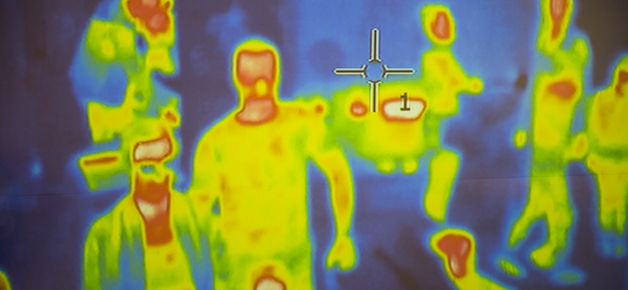
Drones flying close by, monitoring behavior for anything out of the ordinary.
Touchless technology being implemented everywhere.
Thermal imaging cameras observing skin temperatures of people in a crowd.
Our world has changed a lot this year. As we adapt and work to find ways of keeping public spaces safe, we’re opening up to a world of new opportunities.
And risks.
How far do we take it? What is possible? What are we willing to accept as our new normal?
All are serious questions we have to work hard to find the answers to, understand the implications, and implement.
Is thermal imaging a part of the solution?
Infrared cameras could be a starting point to help keep communities safe, and provide initial screening capabilities. Thermal imaging could help screen residents, staff, and visitors, for example, narrowing in on people whose health is outside of what is considered the norm.
Yet this isn’t flawless technology. Some people may be asymptomatic, or not carry a fever at all, even if they test positive. According to one recent article, skin temperatures are almost always lower than internal body temperature. The best places to test are on certain spots on the body, such as the ear canal, corner of the eye, or inside of the mouth. That makes only the most sophisticated thermal imaging systems valuable in critical areas.
Are there risks?
When you’re focused on implementing new technology into your place of business, it’s easy to fall for the bells and whistles. After all, you’re looking for something to help make your community more secure; why focus on the weaknesses? Yet, it’s the weaknesses that can compromise your business in an instant.
Any time technology is involved, hackers are looking for ways to compromise the system. And they’ve found it with thermal imaging. Using a common search tool online, hackers recently discovered thousands of devices in the community. Cybercriminals easily acquired live feeds and accessed the code. While the damage was minimal, and the thermal imaging company was contacted immediately concerning weaknesses, it’s an example of just how wrong things can go.
Is thermal imaging worth the risks?
For the foreseeable future, for many organizations, the answer is: yes.
For local monitoring, it’s an easy way to scan a general population to start the process of determining risk. Thermal imaging cameras can find elevated skin temperatures, and provide audible alerts to instruct an individual to proceed to a second screening area. This is where more complex screenings can occur.
Is it perfect? Technology never offers one-hundred-percent guarantees.
Yet, depending on your circumstance, this added assurance can be a valuable tool in your safety arsenal as we return and build a new “life as normal.”
For IT Strategy, Cloud Conversion, or Help Desk Services reach out to us at Silver Linings Technology 360-450-4759.


